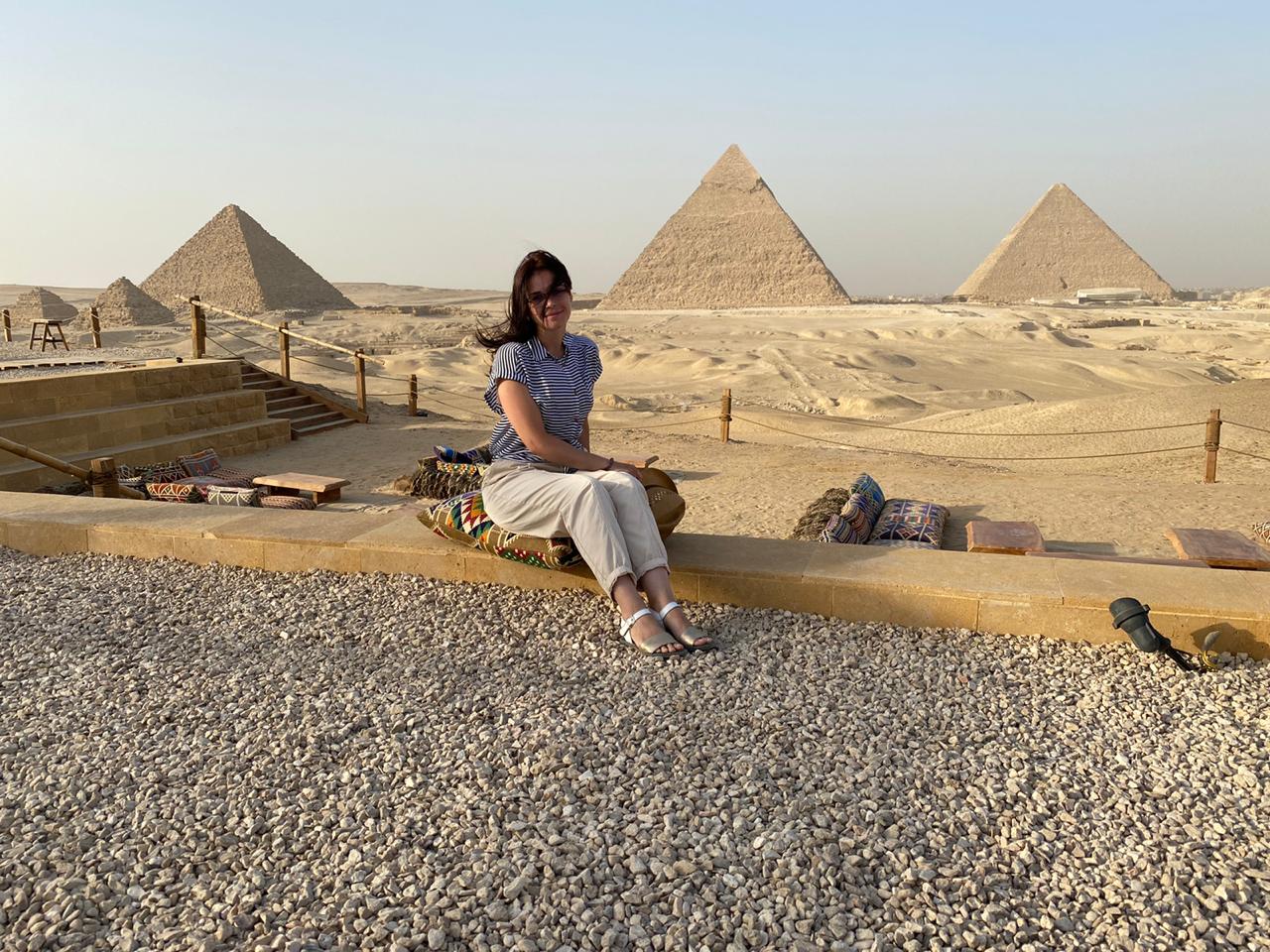
The French Cultural Center's main hall is currently hosting "Hyperrealisme," a selection of multimedia artist Ramy Dozy’s latest works that features mid-sized color photographs of familiar statues from around Cairo.
The images have been reworked and distorted to displace and disfigure the statues, interrupting their iconic status and imbuing them with new meaning. A few of the pieces are instantly familiar, having been digitally released into the public blogosphere over the past year, with some exhibited in the 22nd Youth Salon, but this is the first time they’ve been collectively displayed, and with many more welcomed additions.
One of the more recognizable photographs features the Naguib Mahfouz statue from Sphinx Square in Mohandiseen. Dozy has edited it in a way that makes Mahfouz appear to be tightrope walking along the handrail barrier of a bridge, instantly transforming the statue’s iconic significance into one that borders on the comedic and the absurd.
Another portrays Mahmoud Mokhtar’s iconic Nahdet Misr (Egypt’s Renaissance) statue in Giza from the side. However it’s no longer proudly sitting on its homely, stone platform, but rather, found in the back of a passing pickup truck.
At first sight, it’s difficult to gather and convey any personal feelings toward Dozy’s exhibit, as the blank-faced statues often prompt a feeling of indifference. However, the pieces are undeniably eye-catching, magnetic, and beautiful to look at, allowing ample time for one to try to understand why.
Dozy’s work is iconoclastic in the classic sense, and openly embraces postmodern qualities, such as incongruence and absurdity. But in a similar spirit, the work is also remarkably simple, lending more to the viewer in regards to their subjective meaning.
By simply disfiguring the context of a famous statue, or sometimes parts of the statue itself, Dozy is able to invoke endless speculation.
The artist explains that statues often become symbols of complacency, and that they end up functioning only as historical triumphs, frozen in time, that are continuously milked nostalgically by the people living amongst them until their value becomes completely meaningless.
“In Egypt, we are obsessed with nostalgia to the point that it often becomes all there is,” says Dozy. “These statues are now dirty and irrelevant, and most people don’t even know who they are or what they did, yet if you ask, people will behave as if their accomplishments are also their own.”
Other statues featured in the exhibition are singer Om Kalthoum’s from the Cairo Opera House in Zamalek, poet Ahmed Shawky’s from Dokki, and the statue of Ibrahim Pasha on a horse from Opera Square in Attaba.
“Unfortunately, these statues have become symbols of non-change, placing limits on people’s imagination and creativity, which is horrible,” he says.
Dozy says that he disfigures the images of the statues to force people to actually notice them, to once again wonder who these people were, and question why he is altering them. In this regard, Dozy has succeeded, as many visitors on the exhibition’s opening night could be heard doing just that.
Dozy believes we should be trying to continuously be inspired and create people worthy of statues, yet not become overly obsessed with the icon itself; an interesting idea, which I enjoyed seeing through the eyes of Dozy very much. The only thing I remember wishing at the end of the visit was that there’d be more pieces to look at.
Upon leaving, I asked to take Dozy’s contact info. He pointed to a table near the entrance that had a black stamp on it and hundreds of yellow metro tickets. After stamping a ticket with Dozy's information, I saw the stamp also bore the pharmacy logo of a snake climbing a chalice, except the snake’s head had been changed to that of a rooster.
“Hyperrealisme” is on display until 29 February at the French Cultural Center, 1 Madrasset al-Hokok al-Firinssiya Street, Mounira.




